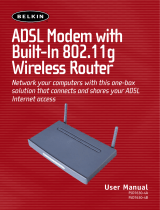
202-10006-01
x Contents
Configuring Windows 95, 98, and Me for TCP/IP Networking .......................................C-2
Install or Verify Windows Networking Components .................................................C-2
Enabling DHCP to Automatically Configure TCP/IP Settings in Windows 95B, 98, and Me
C-4
Selecting Windows’ Internet Access Method ..........................................................C-6
Verifying TCP/IP Properties ....................................................................................C-6
Configuring Windows NT4, 2000 or XP for IP Networking ............................................C-7
Install or Verify Windows Networking Components .................................................C-7
DHCP Configuration of TCP/IP in Windows XP, 2000, or NT4 ...............................C-8
DHCP Configuration of TCP/IP in Windows XP .....................................................C-8
DHCP Configuration of TCP/IP in Windows 2000 ................................................C-10
DHCP Configuration of TCP/IP in Windows NT4 ..................................................C-13
Verifying TCP/IP Properties for Windows XP, 2000, and NT4 ..............................C-15
Configuring the Macintosh for TCP/IP Networking ......................................................C-16
MacOS 8.6 or 9.x ..................................................................................................C-16
MacOS X ...............................................................................................................C-16
Verifying TCP/IP Properties for Macintosh Computers .........................................C-17
Verifying the Readiness of Your Internet Account .......................................................C-18
Are Login Protocols Used? ...................................................................................C-18
What Is Your Configuration Information? ..............................................................C-18
Obtaining ISP Configuration Information for Windows Computers .......................C-19
Obtaining ISP Configuration Information for Macintosh Computers .....................C-20
Restarting the Network ................................................................................................C-21
Appendix D
Wireless Networking Basics
Wireless Networking Overview ......................................................................................D-1
Infrastructure Mode .................................................................................................D-1
Ad Hoc Mode (Peer-to-Peer Workgroup) ................................................................D-2
Network Name: Extended Service Set Identification (ESSID) ................................D-2
Authentication and WEP ................................................................................................D-2
802.11b Authentication ............................................................................................D-3
Open System Authentication ...................................................................................D-3
Shared Key Authentication ......................................................................................D-4
Overview of WEP Parameters ................................................................................D-5
Key Size ..................................................................................................................D-6
WEP Configuration Options ....................................................................................D-6




















